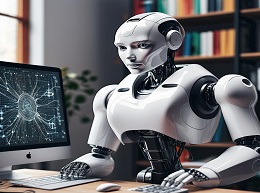Exploring DIY AI: Building Your Own Machine Learning Models

In the ever-evolving landscape of technology, the prospect of building your own machine learning models has become more accessible than ever. This article delves into the exciting realm of DIY AI, guiding readers through the process of crafting their own machine learning solutions and unleashing their creativity in the world of artificial intelligence.
1.The DIY Revolution in AI:
Embark on a journey into the empowering world of DIY AI. Understand how individuals can take charge of their AI endeavors, from conceptualization to deployment.
2. Understanding the Basics: Decoding Machine Learning for Beginners:
Explore the foundational concepts of machine learning. Discuss key terms, algorithms, and the fundamental principles that lay the groundwork for building personalized AI models.
Example: Introducing the concept of supervised learning through the classic example of predicting house prices based on features like square footage and location.
3. Selecting Your DIY Tools: Navigating the Machine Learning Toolbox:
Delve into the variety of tools available for DIY AI enthusiasts. Discuss popular frameworks, libraries, and platforms that cater to different skill levels, making AI accessible to everyone.
Example: Introducing user-friendly platforms like TensorFlow and scikit-learn for beginners, and more advanced tools like PyTorch for those seeking deeper customization.
4. Collecting and Preparing Data: The Heartbeat of AI Models:
Understand the importance of data in machine learning. Discuss the process of collecting, cleaning, and preparing datasets, emphasizing the significance of quality data for robust model training.
Example: Building a sentiment analysis model using a dataset of customer reviews, showcasing the impact of data quality on model accuracy.
5. Choosing the Right Algorithm: Tailoring Models to Your Needs:
Explore different machine learning algorithms and their applications. Discuss how to choose the right algorithm based on the nature of the problem, empowering DIY AI enthusiasts to customize their models.
Example: Demonstrating the selection of a classification algorithm for image recognition tasks and a regression algorithm for predicting numerical outcomes.
6. Training Your Model: From Concept to Reality:
Guide readers through the process of training a machine learning model. Discuss hyperparameter tuning, model evaluation, and the iterative nature of refining models to achieve optimal performance.
Example: Showcasing the steps to train a model for handwritten digit recognition using the MNIST dataset, emphasizing the importance of iteration in improving accuracy.
7. DIY AI in Action: Real-World Examples and Applications:
Present real-world examples of DIY AI applications. Discuss how individuals have used homemade machine learning models for diverse purposes, from image recognition to natural language processing.
Example: Highlighting a DIY AI project where a user created a personalized recommendation system for movie preferences based on historical viewing data.
8. Interpreting Results and Iterating: The DIY Learning Curve:
Explore how to interpret model results and iterate for improvement. Discuss the continuous learning process that comes with DIY AI, emphasizing the value of experimentation and refinement.
Example: Illustrating how to interpret confusion matrices and precision-recall curves, guiding users in refining their models based on performance metrics.
9. Challenges and Pitfalls: Navigating the DIY AI Landscape:
Examine common challenges and pitfalls in DIY AI projects. Discuss issues such as overfitting, underfitting, and ethical considerations, providing guidance on overcoming obstacles.
Example: Addressing the challenge of overfitting by explaining regularization techniques and showcasing their application in model improvement.
As the DIY AI movement gains momentum, individuals are empowered to explore the fascinating world of machine learning. "DIY AI: Unleashing the Power of Homemade Machine Learning Models" inspires readers to embark on their own AI journey, fostering a sense of creativity, curiosity, and accomplishment in the dynamic realm of artificial intelligence.